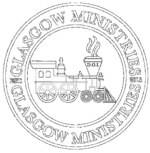COMMUNITY OUTREACH
Community Outreach: Strengthening Bonds, Empowering Change
Community outreach plays a pivotal role in fostering relationships between organizations and the communities they serve. It’s a cornerstone for building trust, driving social impact, and ensuring mutual growth. From large corporations to local businesses and nonprofits, a well-structured outreach program can deliver transformative results.

What Is Community Outreach?
Community outreach involves initiatives aimed at engaging with and addressing the needs of a community. This interaction can take various forms such as education, charity, partnerships, or advocacy. It’s about going beyond organizational walls to create meaningful connections that empower individuals and groups within the community.
- Educational Initiatives:
- Workshops on financial literacy, technology skills, or entrepreneurship.
- Tutoring or mentorship programs for students.
- Providing scholarships or funding school supplies.
- Healthcare Support:
- Hosting free health screenings and vaccination drives.
- Offering mental health resources or counseling.
- Supporting fitness programs like yoga sessions or community runs.
- Economic Empowerment:
- Job fairs connecting employers with job seekers.
- Training programs for skill development.
- Supporting local artisans through fairs or funding.
- Environmental Action:
- Community clean-up drives.
- Tree planting events or renewable energy workshops.
- Recycling programs with incentives.
- Charitable Giving:
- Food banks or meal distributions.
- Donation drives for clothes, toys, or books.
- Supporting disaster relief efforts.

Challenges in Community Outreach
Future of Community Outreach
The rise of technology and globalization opens new opportunities for outreach programs. Virtual events, data-driven solutions, and innovative partnerships can help organizations achieve wider reach and deeper impact. However, the core principle remains the same: genuine connection and a commitment to shared growth.
By prioritizing community needs and maintaining collaborative efforts, community outreach will continue to be a powerful force for positive change in society.

